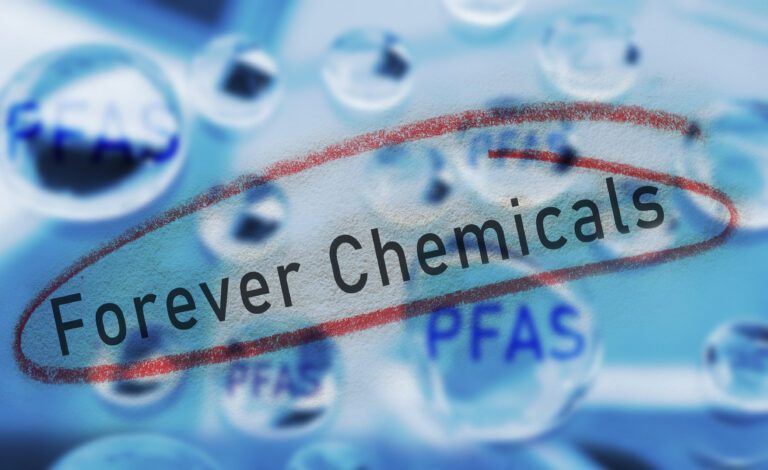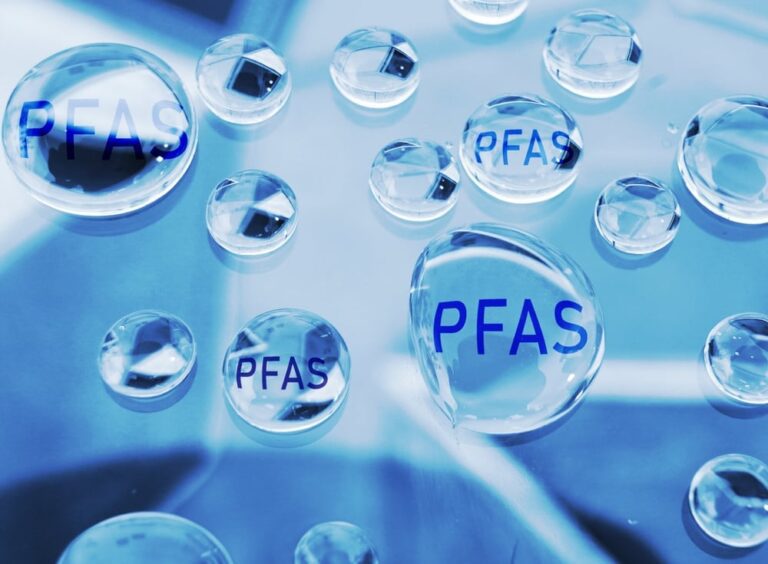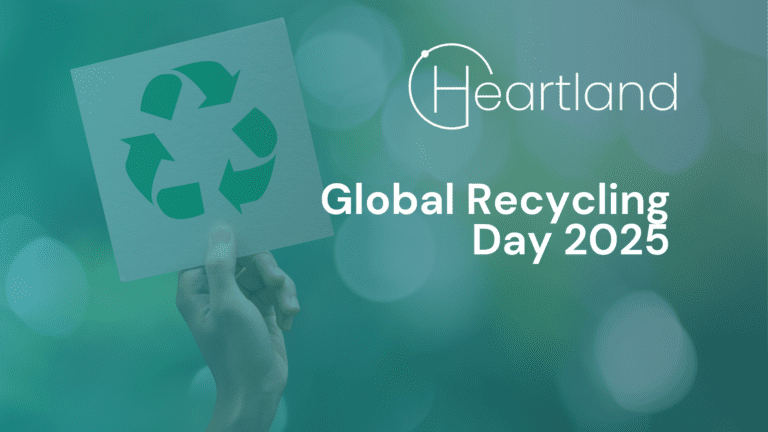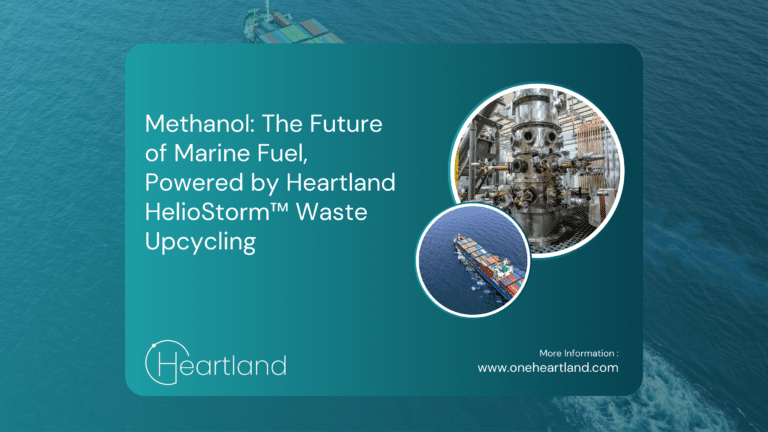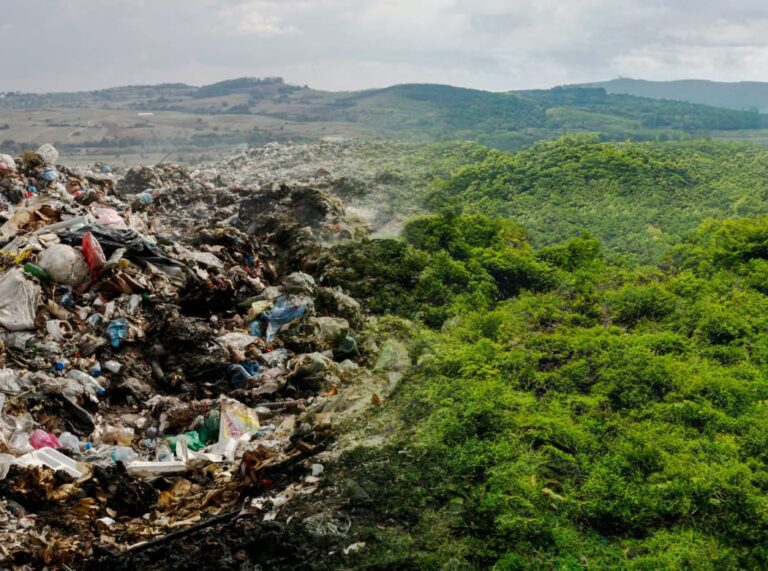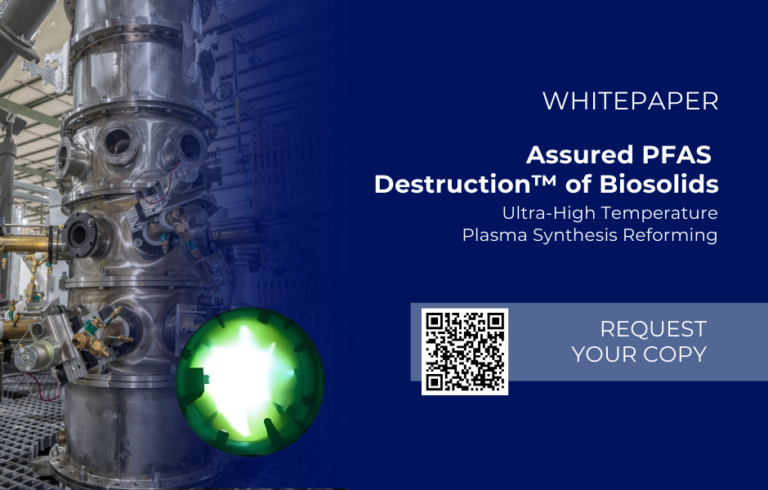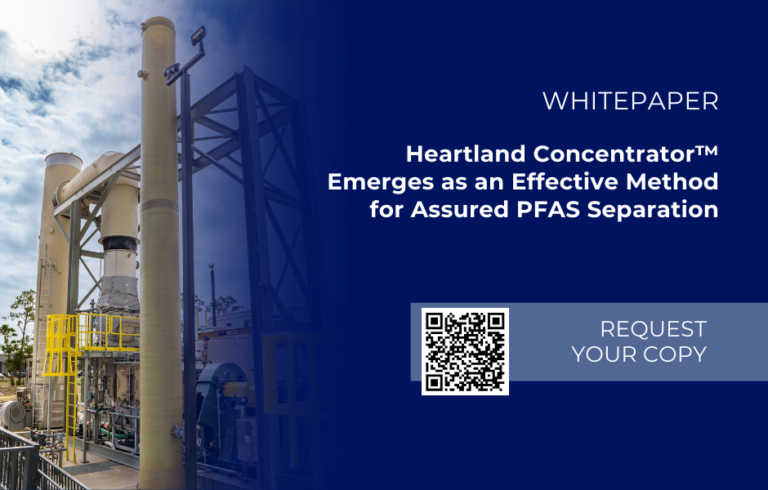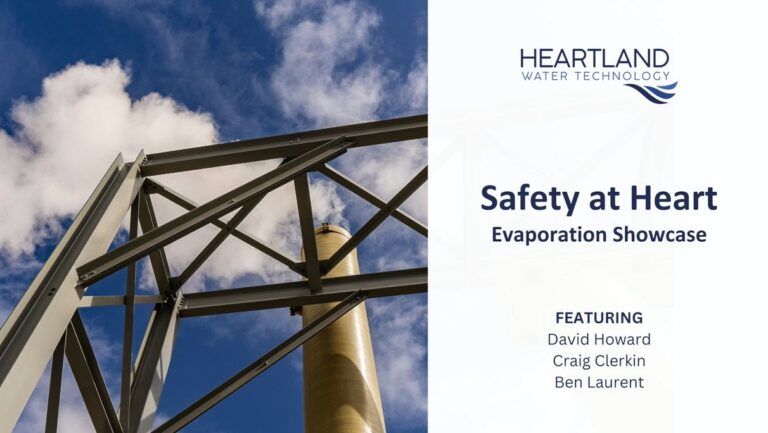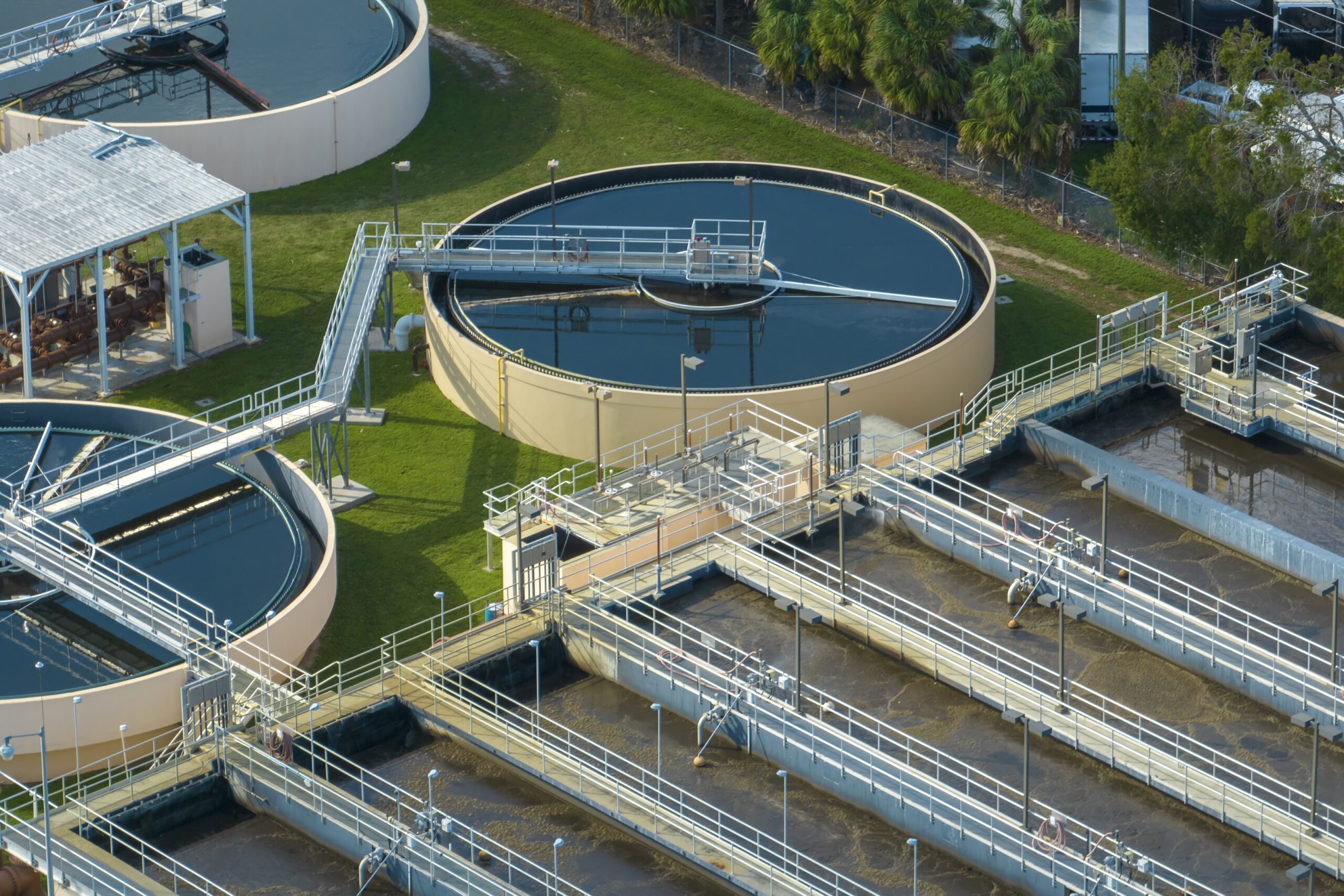
Per- and polyfluoroalkyl substances (PFAS), often called “forever chemicals,” include synthetic compounds with carbon-fluorine bonds. These bonds resist degradation. Manufacturers use PFAS in many products to provide water and grease resistance. Common products include non-stick cookware, water-repellent clothing, food packaging, and firefighting foam.
These compounds enter wastewater treatment plants through a wide range of channels, including sewage sludge produced during municipal wastewater processing. Industrial facilities release PFAS into sewer systems as part of manufacturing processes. Commercial laundries, car washes, and domestic cleaning products also contribute to PFAS loading in municipal wastewater. Once inside a treatment plant, PFAS do not degrade. Instead, they concentrate in the biosolids remaining after the treatment process.
Why Is PFAS in Biosolids a Growing Concern?
The land application of biosolids introduces PFAS into the environment. In 2021, the U.S. applied around 670,000 dry metric tons of PFAS-laden biosolids to agricultural land, according to Nature. This scale of application increases the risk of PFAS entering the food chain through soil, crops, and livestock.
The mobility of PFAS compounds amplifies the concern. When farmers spread biosolids on fields, rain events can mobilize PFAS into runoff or leachate. The resulting contamination affects surface water, drinking water aquifers, and surrounding wildlife habitats.
Sources of PFAS Contamination
Sources include:
- Non-stick and stain-resistant consumer goods
- Aqueous film-forming foam (AFFF) used in firefighting
- Industrial facilities producing plastics, textiles, or electronics
- Landfill leachate from disposed PFAS-containing materials
- Metal plating, semiconductor fabrication, and photolithography
Wastewater Treatment and PFAS
Wastewater treatment plants remove solids, pathogens, and nutrients, but they do not effectively aid with PFAS treatment and removal. These compounds persist and concentrate in biosolids. Researchers have observed that even advanced wastewater systems with tertiary treatment struggle to reduce PFAS concentrations significantly.
Biosolids and Regulation
The Environmental Protection Agency (EPA) has begun assessing PFAS risks in biosolids. However, federal regulation remains limited. States such as Michigan, Maine, and Connecticut have introduced their own standards, while others still allow land application without restrictions. This inconsistency leaves many wastewater treatment facilities without clear direction.
Health and Environmental Risks of PFAS in Biosolids
PFAS in biosolids raise serious concerns for both human health and the environment. These persistent chemicals travel from industrial facilities and households into wastewater systems, where they resist treatment and accumulate in the solids left behind. When land-applied as biosolids, these materials can expose people, animals, and ecosystems to toxic compounds.
Understanding the risks associated with PFAS in biosolids requires examining how exposure occurs, what consequences follow, and how these threats continue to grow across communities that rely on land application as a waste management solution.
Health Impacts of PFAS Exposure
Exposure to PFAS can cause serious health issues. Researchers have linked PFAS exposure to several diseases and health conditions, including:
- Kidney and testicular cancer
- Liver enzyme changes
- Thyroid disease
- Reduced vaccine response in children
- High cholesterol
- Pregnancy complications
Longitudinal studies conducted by public health institutions confirm that low-level chronic exposure contributes to bioaccumulation in humans. These effects increase over time as PFAS remain in blood plasma without significant metabolic breakdown.
PFAS in the Food Chain
When farmers apply biosolids to soil, crops can absorb PFAS. Animals that consume contaminated feed may accumulate PFAS in their bodies. These chemicals can then pass to humans through meat, dairy, and produce. Long-term exposure increases the potential for adverse health effects.
Studies conducted in states such as Maine and Vermont have confirmed PFAS presence in milk and vegetables. These findings have led to emergency responses, including the halting of biosolids use in agricultural programs.
Environmental Risks from Biosolids
Biosolids application can introduce PFAS into the environment in several ways:
- Rain can wash PFAS into nearby surface water
- PFAS can leach through soil into groundwater
- Wildlife can ingest PFAS from soil or water
Once introduced into the soil, PFAS bind weakly to organic matter. They migrate easily through the vadose zone and into aquifers. Monitoring studies show PFAS travel beyond application sites within months, posing risks to downstream water users.
The risks associated with PFAS in biosolids connect to broader challenges in biosolids management, including:
- Bioaccumulation in organisms
- Soil contamination
- Threats to water quality
- Public health concerns linked to environmental toxins
Environmental Consequences of PFAS Contamination
The presence of PFAS in biosolids presents ongoing ecological challenges that stretch well beyond human health. These compounds persist in nature, accumulate in living organisms, and travel far from their points of origin. Once introduced into an environment, PFAS can disrupt ecosystems, harm wildlife, and degrade natural resources that communities depend on.
Effective management of these impacts requires a thorough understanding of how PFAS behave in soil and water, how they affect biodiversity, and why current remediation efforts often fall short. The following sections explore how these environmental consequences continue to unfold in regions where biosolids containing PFAS have been applied.
Effects on Wildlife and Ecosystems
Researchers have observed the following effects of PFAS on ecosystems:
- Reproductive harm in aquatic organisms
- Growth and developmental issues in amphibians and fish
- Immune suppression in wildlife
PFAS accumulate in benthic invertebrates, fish, and aquatic vegetation. These organisms serve as food sources for birds and mammals, allowing PFAS to move through the food web. In some cases, predator species such as bald eagles and otters have shown elevated PFAS levels in tissue samples.
Persistence and Mobility of PFAS
PFAS do not degrade in the environment. These compounds travel easily through soil and water. After application of biosolids, PFAS can move into groundwater and persist for decades. Scientists from ScienceDirect confirm PFAS mobility through multiple environmental pathways.
Long-term studies on groundwater plumes near land application sites show PFAS persistence exceeding 15 years. These compounds resist breakdown by biological or chemical means. Once groundwater becomes contaminated, water utilities must install expensive filtration systems to meet safety thresholds.
Challenges in Cleaning Up PFAS
Environmental remediation for PFAS contamination presents several obstacles:
- PFAS exist in extremely low concentrations, which complicates detection
- Standard treatment systems cannot remove them
- Thermal incineration consumes large amounts of energy
- Remediation projects require long-term monitoring and high financial investment
Case studies from contaminated sites in New Hampshire and Michigan show the high cost of addressing widespread PFAS contamination. Community-led remediation efforts often require state and federal support.
Ongoing Environmental Monitoring
Communities impacted by PFAS contamination must invest in long-term monitoring programs. These programs include groundwater testing, soil analysis, and food safety evaluations. Without sustained efforts, PFAS can remain undetected and continue to pose threats.
Economic and Regulatory Implications
PFAS contamination introduces more than environmental and health concerns—it brings real economic strain and regulatory uncertainty. Communities across the country must allocate significant financial and operational resources to deal with the growing impact of PFAS in biosolids. While some states are pushing forward with aggressive regulations, the lack of a cohesive national policy creates inconsistent standards and responsibilities. The following sections break down the financial toll, evolving legislation, and long-term business implications related to PFAS management.
The Cost of Contamination
Municipalities and industries bear the financial burden of PFAS contamination. Key expenses include:
- Installing advanced treatment systems at wastewater facilities
- Managing land application alternatives
- Testing soil, crops, water, and biosolids for PFAS
- Handling lawsuits or regulatory fines
Some local governments have spent millions of dollars responding to PFAS issues. For example, in 2022, the state of Maine allocated $60 million for PFAS cleanup in agricultural settings. These costs cover testing, crop loss reimbursement, and safe disposal of biosolids.
Lack of Federal Uniformity
Currently, no consistent federal rule regulates PFAS levels in biosolids. Some states ban land application of PFAS-contaminated biosolids, while others allow the practice with little oversight. The Northeast Biosolids & Residuals Association (NEBRA) has noted this regulatory gap. As public awareness grows, state-level efforts continue to expand.
Regulatory Shifts and Legal Pressure
The legal landscape continues to evolve. Advocacy groups demand stricter limits on PFAS in biosolids. Lawsuits related to PFAS contamination have increased, especially against manufacturers and treatment plant operators.
Litigation from affected communities has pushed regulators to adopt more proactive stances. As more evidence accumulates, policymakers will likely implement enforceable PFAS limits in biosolids.
Economic Risks
Continued PFAS use in industry increases long-term liability. Companies and municipalities risk facing lawsuits and cleanup costs if they mishandle biosolids. Investors now view PFAS risk as a key consideration in environmental, social, and governance (ESG) strategies.
Treatment Technologies for PFAS in Biosolids
Effective treatment of PFAS in biosolids remains a critical challenge. Many traditional methods only relocate PFAS from one medium to another instead of eliminating them. New technologies aim to close this gap by focusing on complete destruction rather than containment. The following sections evaluate the limitations of legacy approaches and introduce next-generation solutions, including Heartland’s HelioStorm™, that offer a path forward.
Traditional Treatment Shortcomings
Traditional methods for PFAS removal do not offer complete destruction. These include:
- Granular activated carbon (GAC)
- Reverse osmosis
- Thermal incineration
These methods separate PFAS from wastewater or biosolids but do not always eliminate the compounds. In many cases, they create additional waste streams that still require treatment.
HelioStorm™ from Heartland
Heartland developed HelioStorm™ to address the destruction gap. This technology uses ultra-high temperature ionic gasification to treat biosolids. Operating at 3,000°C to 10,000°C, HelioStorm™ breaks down PFAS compounds entirely. These temperatures exceed the resistance thresholds of perfluorooctanoic acid and other PFAS chemicals.
Benefits of HelioStorm™
HelioStorm™ offers several key advantages:
- On-site treatment eliminates transportation costs and risks
- Scalable design works for medium and small-scale facilities
- High efficiency leads to complete PFAS destruction
Alternative Technologies and Innovation
Other emerging treatment solutions include:
- Advanced oxidation processes (AOP)
- Supercritical water oxidation (SCWO)
- Plasma-enhanced thermal destruction
Heartland’s approach focuses on providing reliable, energy-efficient, and cost-effective PFAS destruction technologies.
Addressing Transportation and Liability
On-site destruction technology prevents the need to transport biosolids containing PFAS to remote incineration or landfill sites. This reduces the risk of accidental release and cuts emissions. Heartland clients benefit from fewer logistical complications and a lower environmental footprint.
Heartland’s Commitment to PFAS Solutions
Since 2008, Heartland has provided waste treatment solutions for industrial clients, landfills, and wastewater treatment facilities. The company focuses on technologies that handle difficult waste streams, including those containing PFAS.
Heartland LTC Dry™ and HelioStorm™ Integration
Heartland’s two proprietary technologies, Heartland LTC Dry™ and HelioStorm™, work in combination to address PFAS in biosolids. The LTC Dry™ reduces liquid volume and isolates PFAS. HelioStorm™ then completely destroys the compounds. This two-step process delivers effective and environmentally sound treatment.
Focus on On-Site Deployment
Heartland designs its systems for on-site installation. This eliminates the need to haul waste long distances. Clients can reduce emissions, control treatment parameters, and maintain regulatory compliance with fewer delays.
Proven Environmental Benefits
Heartland solutions help clients achieve several environmental goals:
- Prevent groundwater and soil contamination
- Limit human and animal exposure to harmful chemicals
- Support compliance with emerging PFAS regulations
Partnership and Transparency
Heartland works closely with clients to understand site-specific challenges. Engineers and project managers provide tailored solutions. The company offers data-driven reporting to support transparency and decision-making.
Moving Toward Actionable Solutions
Stakeholders need to act now and prioritize sustainable, science-based solutions that reduce risk and build resilience across communities. Delay will only increase the cost—financially, environmentally, and socially. PFAS in biosolids represent a critical challenge that affects public health, agriculture, and the environment. The lack of effective treatment and regulation only heightens the risks.
Heartland offers proven, forward-looking solutions. The company’s technologies address PFAS contamination with science-backed processes that lead to complete destruction. By working with Heartland, clients can meet environmental obligations and lead the transition to safer waste management practices.
Take the Next Step
Wastewater treatment plants, landfill operators, and other organizations facing PFAS challenges can contact Heartland to begin exploring solutions. HelioStorm™ and LTC Dry™ systems provide the power and precision needed to manage today’s most complex environmental threats.
Visit our website or call (800) 759-1758 to speak with a specialist. Let’s protect human health and the environment together.

